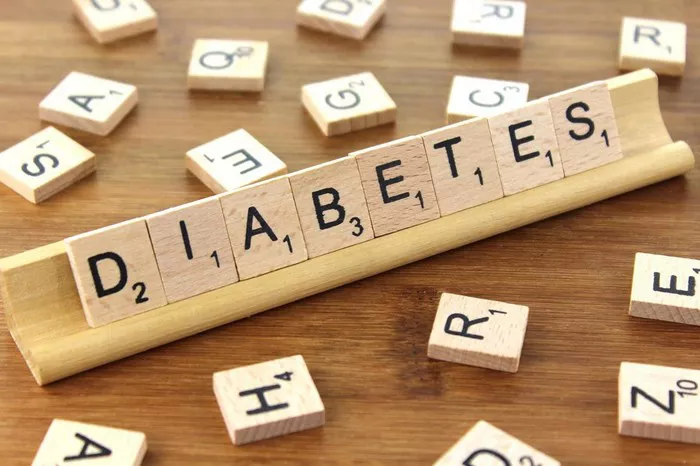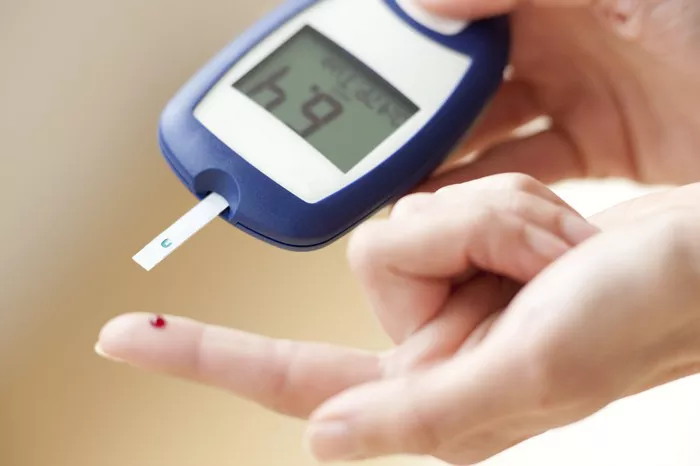Type 1 diabetes, formerly known as insulin-dependent diabetes mellitus (IDDM) or juvenile diabetes, is a chronic autoimmune disorder in which the immune system attacks the insulin-producing beta cells in the pancreas. This leads to an absolute deficiency of insulin, a hormone essential for regulating blood glucose levels. Without insulin, glucose builds up in the bloodstream instead of being transported into the cells, leading to high blood sugar (hyperglycemia) and causing the classic clinical manifestations associated with type 1 diabetes.
Understanding the clinical manifestations of type 1 diabetes is crucial for timely diagnosis and treatment, as the condition can develop rapidly and, if left untreated, can lead to severe complications or even death. This article will explore the clinical features of type 1 diabetes, the underlying pathophysiology, and the importance of recognizing early symptoms.
The Pathophysiology of Type 1 Diabetes
To understand the clinical manifestations of type 1 diabetes, it is essential to first grasp the underlying pathophysiology of the disease.
In a healthy individual, the pancreas produces insulin in response to elevated blood glucose levels, such as after a meal. Insulin allows glucose to enter cells, where it is used for energy or stored for future use. In people with type 1 diabetes, the immune system mistakenly identifies the insulin-producing beta cells in the pancreas as foreign invaders and destroys them. This process typically occurs over several months or years, although the symptoms of type 1 diabetes often appear suddenly.
As the beta cells are destroyed, the pancreas produces little to no insulin, leading to the accumulation of glucose in the bloodstream. This hyperglycemia is responsible for the hallmark symptoms of type 1 diabetes, which are driven by the body’s attempt to compensate for the lack of insulin and the resulting energy deficiency.
Clinical Manifestations of Type 1 Diabetes
The clinical manifestations of type 1 diabetes can be divided into classic symptoms, acute complications, and chronic complications. These symptoms are primarily a result of hyperglycemia and the body’s efforts to manage its effects.
Classic Symptoms of Type 1 Diabetes
The classic symptoms of type 1 diabetes, often referred to as the “3 Ps,” include polyuria (excessive urination), polydipsia (excessive thirst), and polyphagia (increased hunger). These symptoms are frequently accompanied by unexplained weight loss, fatigue, and blurred vision.
Polyuria (Excessive Urination)
Polyuria is one of the earliest and most prominent symptoms of type 1 diabetes. It occurs when the kidneys attempt to filter and excrete the excess glucose in the blood. Under normal circumstances, the kidneys reabsorb glucose from the filtrate (the fluid that becomes urine), but when blood glucose levels are too high (typically above 180 mg/dL), the kidneys are unable to reabsorb all the glucose. As a result, glucose spills into the urine (glycosuria), drawing water with it through osmosis, which leads to increased urine production.
People with type 1 diabetes may notice they are urinating more frequently, including waking up multiple times during the night to urinate (nocturia). The increased fluid loss can also lead to dehydration, exacerbating the other symptoms of the disease.
Polydipsia (Excessive Thirst)
Polydipsia is the excessive thirst that often accompanies polyuria. As the body loses more water through urine, it triggers the sensation of thirst to compensate for the fluid loss. Individuals with type 1 diabetes may find themselves drinking large amounts of water or other fluids in an attempt to quench their thirst, yet still feeling persistently dehydrated.
Polyphagia (Increased Hunger)
Polyphagia, or increased hunger, is another classic symptom of type 1 diabetes. Despite the presence of elevated blood glucose levels, the cells of the body are starved for energy because glucose cannot enter the cells without insulin. In response, the body signals hunger, encouraging the individual to eat more in an attempt to gain energy. However, even with increased food intake, weight loss often continues, as the body is unable to effectively utilize the glucose from the food.
Unexplained Weight Loss
Weight loss is a common and concerning symptom of type 1 diabetes, particularly in children and young adults. The weight loss occurs because the body begins to break down fat and muscle tissue for energy in the absence of glucose utilization. This catabolic state leads to rapid and unintended weight loss, which can be a red flag for diagnosing type 1 diabetes, especially when accompanied by other symptoms such as polyuria and polydipsia.
Fatigue and Weakness
Fatigue is another common symptom of type 1 diabetes and results from the body’s inability to use glucose for energy. As the cells are deprived of glucose, the body becomes fatigued, and individuals may experience a general sense of weakness, lethargy, or decreased stamina. This symptom can significantly impact daily activities and quality of life.
Blurred Vision
Blurred vision is a symptom that occurs due to the effects of hyperglycemia on the lens of the eye. High blood glucose levels cause the lens to swell, altering its shape and affecting the eye’s ability to focus. Blurred vision may fluctuate with changes in blood glucose levels and is often reversible once blood sugar levels are brought under control.
Acute Complications of Type 1 Diabetes
In addition to the classic symptoms, type 1 diabetes can lead to acute complications if left untreated or if blood glucose levels are not adequately managed. The most serious acute complication is diabetic ketoacidosis (DKA).
Diabetic Ketoacidosis (DKA)
Diabetic ketoacidosis (DKA) is a life-threatening condition that occurs when the body cannot produce enough insulin to utilize glucose for energy. As a result, the body begins to break down fat for fuel, producing ketones as a byproduct. Ketones are acidic compounds that accumulate in the blood and can lead to metabolic acidosis, a dangerous condition characterized by a decrease in blood pH.
The clinical manifestations of DKA include:
Nausea and vomiting: The accumulation of ketones in the blood can cause nausea and vomiting, which may exacerbate dehydration and electrolyte imbalances.
Abdominal pain: Abdominal pain is a common symptom of DKA and may be mistaken for other conditions such as appendicitis or gastroenteritis.
Fruity-scented breath: The breakdown of fat produces acetone, a type of ketone that can be detected on the breath, often giving it a fruity odor.
Rapid, deep breathing (Kussmaul respirations): As the body attempts to compensate for the metabolic acidosis, individuals may develop rapid, deep breathing to blow off excess carbon dioxide.
Confusion or altered consciousness: Severe DKA can lead to altered mental status, confusion, or even coma, as the acidosis affects brain function.
DKA is a medical emergency and requires immediate treatment with insulin, fluids, and electrolytes to correct the metabolic imbalances and prevent further complications.
Chronic Complications of Type 1 Diabetes
While the classic symptoms of type 1 diabetes and acute complications like DKA are critical for early diagnosis and intervention, chronic complications can develop over time if blood glucose levels are not adequately managed. These complications primarily affect the blood vessels and nerves, leading to damage in various organs and systems.
Cardiovascular Disease
People with type 1 diabetes are at an increased risk of developing cardiovascular disease (CVD), including heart attacks, strokes, and peripheral artery disease. Chronic hyperglycemia, along with other risk factors such as hypertension and dyslipidemia, contributes to the development of atherosclerosis (hardening of the arteries), which can lead to reduced blood flow to the heart, brain, and extremities.
Neuropathy (Nerve Damage)
Diabetic neuropathy is a common complication of long-standing type 1 diabetes and can affect both the peripheral and autonomic nervous systems. The most common form is peripheral neuropathy, which typically affects the feet and legs, causing symptoms such as:
Numbness or tingling: A loss of sensation or abnormal tingling in the extremities, particularly in the feet and toes.
Burning or sharp pain: Some individuals may experience burning, sharp, or shooting pain in the affected areas, which can be particularly bothersome at night.
Loss of reflexes: In severe cases, peripheral neuropathy can lead to a loss of reflexes and muscle weakness, increasing the risk of falls and injuries.
Autonomic neuropathy, which affects the autonomic nervous system, can lead to complications such as gastroparesis (delayed stomach emptying), orthostatic hypotension (low blood pressure when standing), and erectile dysfunction.
Retinopathy (Eye Damage)
Diabetic retinopathy is a leading cause of blindness in adults and occurs when high blood glucose levels damage the small blood vessels in the retina, the light-sensitive tissue at the back of the eye. The early stages of retinopathy may be asymptomatic, but as the condition progresses, individuals may experience:
Blurred vision: Blurred or distorted vision can occur as a result of fluid accumulation in the retina or the development of abnormal blood vessels.
Floaters: Dark spots or streaks in the vision may indicate bleeding from damaged blood vessels in the retina.
Vision loss: In advanced cases, diabetic retinopathy can lead to partial or complete vision loss if left untreated.
Regular eye exams are crucial for detecting retinopathy early and preventing vision loss through interventions such as laser therapy or intraocular injections.
Nephropathy (Kidney Damage)
Diabetic nephropathy is a complication that affects the kidneys, leading to progressive kidney damage and, in severe cases, kidney failure. The earliest sign of nephropathy is the presence of albumin (a type of protein) in the urine, which can be detected through a urine test. As the condition progresses, individuals may develop symptoms such as:
Swelling (edema): Fluid retention in the legs, ankles, or around the eyes may occur as kidney function declines.
Fatigue: As the kidneys lose their ability to filter waste products from the blood, individuals may experience fatigue, nausea, and difficulty concentrating.
High blood pressure: Hypertension is both a cause and a consequence of diabetic nephropathy and can accelerate the progression of kidney damage.
Managing blood sugar levels and blood pressure is essential for preventing or slowing the progression of diabetic nephropathy.
Importance of Early Detection and Management
Early detection and management of type 1 diabetes are crucial for preventing the acute and chronic complications associated with the disease. Recognizing the classic symptoms of polyuria, polydipsia, polyphagia, and unexplained weight loss can lead to a timely diagnosis, allowing for the initiation of insulin therapy and the prevention of life-threatening complications such as DKA.
Once diagnosed, individuals with type 1 diabetes must work closely with their healthcare team to monitor blood glucose levels, adjust insulin dosages, and adopt a healthy lifestyle that includes regular exercise and a balanced diet. Regular screening for complications such as retinopathy, neuropathy, and nephropathy is also essential for maintaining long-term health and preventing disability.
See also: What Causes Type 1 Diabetes to Develop?
Conclusion
Type 1 diabetes is a complex and challenging condition that requires lifelong management. The clinical manifestations of type 1 diabetes, from the classic symptoms of hyperglycemia to the acute and chronic complications, highlight the importance of early diagnosis, effective treatment, and ongoing monitoring.
Understanding the clinical manifestations of type 1 diabetes can help individuals, families, and healthcare providers recognize the signs of the disease and take appropriate action to manage it. With proper care and attention, individuals with type 1 diabetes can lead healthy, fulfilling lives while minimizing the risk of complications.
Related topics:
























